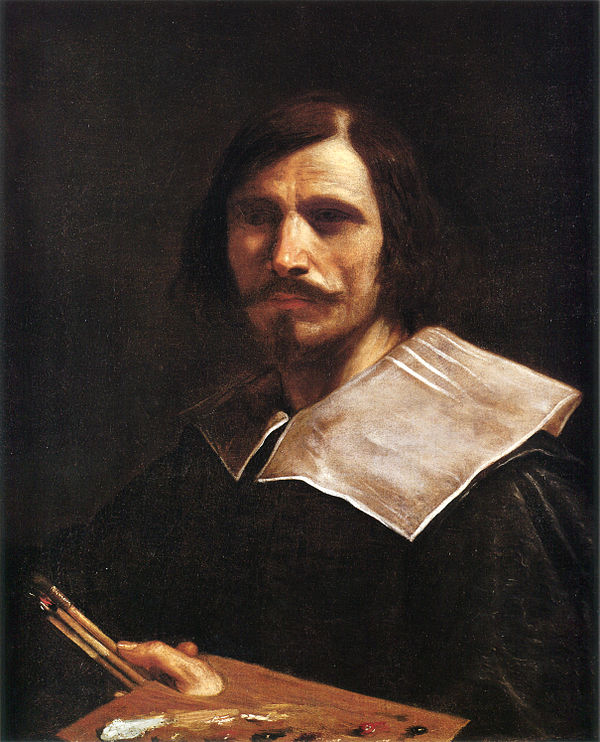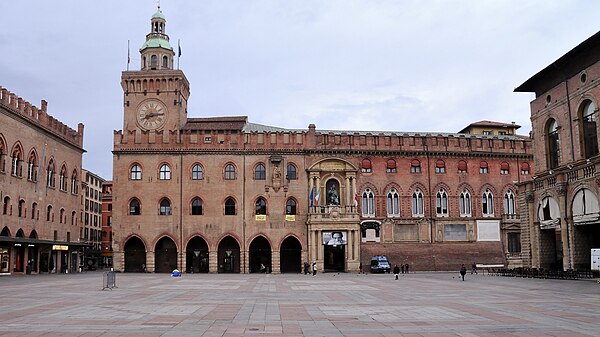Guercino
Videos
Page
Giovanni Francesco Barbieri, better known as (il) Guercino, was an Italian Baroque painter and draftsman from Cento in the Emilia region, who was active in Rome and Bologna. The vigorous naturalism of his early manner contrasts with the classical equilibrium of his later works. His many drawings are noted for their luminosity and lively style.

Self portrait, c. 1635

Guercino

The dramatic confrontation with mortality depicted in Guercino's Et in Arcadia ego (c. 1618–1622) marks the first known usage of this Latin motto (inscribed on the plinth beneath the skull)

This contemporary portrait (1623) by Ottavio Leoni highlights the lifelong squint (a form of strabismus) which prompted the name 'Guercino'. Despite presumably having monocular vision due to a 'lazy' right eye, Guercino showed remarkable facility to imply depth in his works, perhaps assisted by an enhanced perception of light and shade thanks to compensation by the healthy eye. Other artists with different types of strabismus include Rembrandt, Dürer,
Bologna
Videos
Page
Bologna is the capital and largest city of the Emilia-Romagna region in Northern Italy. It is the seventh most populous city in Italy, with about 400,000 inhabitants and 150 different nationalities. Its metropolitan area is home to more than 1,000,000 people. It is known as the Fat City for its rich cuisine, and the Red City for its red tiled rooftops and, more recently, its leftist politics. It is also called the Learned City because it is home to the oldest university in the world.

Image: Piazza Maggiore Bologna DSCN9588

Image: (Bologna) Fontana del Nettuno

Image: Bologna Torri di Bologna 202109132316

Image: Dalla piazza maggiore